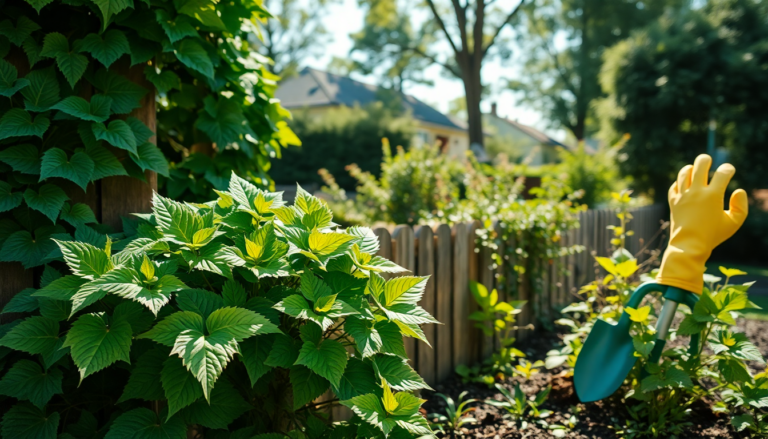Argomenti trattati
Encountering poison ivy in your garden can feel like running into an old nemesis. This pesky plant, known for its aggressive growth and irritating effects, thrives in moist, shady spots, making it a common nuisance for homeowners. But can you spot its distinctive three-leaflet formation? Those glossy green leaves with serrated edges are hallmarks of this troublesome weed. The culprit behind its havoc is urushiol oil, which can trigger severe allergic reactions, leading to rashes, blisters, and endless itching. That’s why knowing how to effectively manage and remove poison ivy is crucial for keeping your outdoor space safe and enjoyable.
Understanding Poison Ivy’s Growth Patterns
Did you know poison ivy can spread like wildfire? Its extensive root systems and seed production allow it to flourish, often transported by animals, water, or even us humans! As landscaping expert Gene Caballero points out, if you spot one vine, chances are there are more lurking nearby. Left unchecked, poison ivy can quickly take over an area, making early intervention a must. So, how do you tackle this tenacious foe?
First things first—safety is key! When dealing with poison ivy, protective clothing is a non-negotiable. Always wear gloves, long sleeves, pants, and closed-toe shoes to shield yourself from urushiol. If you’re particularly sensitive, consider footwear that can be easily cleaned after exposure. And don’t forget about barrier skin creams—they can add an extra layer of defense against those itchy allergic reactions.
Five Effective Methods for Poison Ivy Removal
1. **Manual Removal**: The simplest way to eliminate poison ivy is by uprooting it manually. This method requires careful attention to avoid contact with the plant. Make sure to use gardening tools designed for the task and clean them thoroughly with rubbing alcohol post-removal. Always dispose of the uprooted plants responsibly—burning them is a no-go, as it can release urushiol into the air, posing health risks.
2. **Herbicides**: Prefer a chemical approach? Herbicides specifically formulated for woody plants can do the trick. Apply the herbicide directly to the leaves or cut stems for maximum effectiveness. Just remember, stubborn infestations may require multiple applications, so following the manufacturer’s guidelines is crucial.
3. **Smothering Technique**: For those dealing with minimal growth, the smothering technique can be surprisingly effective. Cover the affected area with layers of cardboard, newspaper, or mulch. This will block sunlight and eventually inhibit the poison ivy’s growth. A word of caution: patience is key, as this method may take some time to show results.
4. **Goat Grazing**: Looking for an eco-friendly solution? Why not enlist the help of goats? These little grazers are known to munch on poison ivy without any adverse effects, making them a fantastic natural option for controlling its spread. Just be prepared to set up temporary fencing to keep the goats in the infested area.
5. **Professional Assistance**: If you’re facing a full-blown infestation, it might be time to call in the pros. Landscaping or pest control experts have the knowledge and tools necessary for effective removal. Plus, they can implement strategies to prevent regrowth, giving you peace of mind.
Monitoring and Prevention
Once you’ve tackled the poison ivy, don’t just sit back and relax. Monitoring the area regularly is crucial to ensure that the pesky plant doesn’t make a comeback. Keep an eye on growth patterns and promptly address any new sprouts. And remember, maintaining a well-kept garden with regular maintenance can deter the growth of invasive species, including poison ivy.
In conclusion, while poison ivy can be a significant challenge for homeowners, understanding its characteristics and employing effective removal strategies can lead to a safe and beautiful outdoor environment. By prioritizing safety and using the methods discussed, you can manage this pesky plant and enjoy your garden to the fullest. Ready to reclaim your outdoor space?

